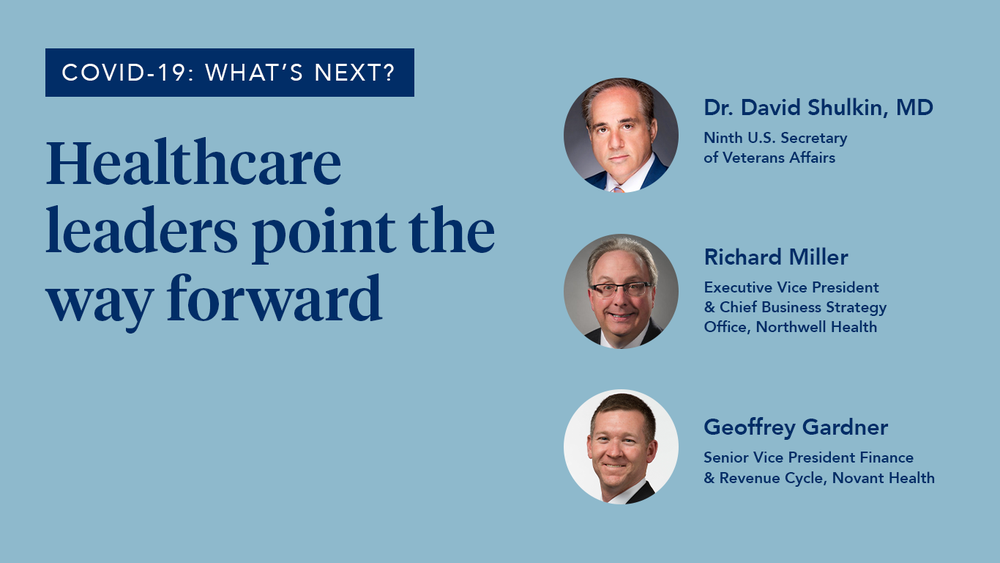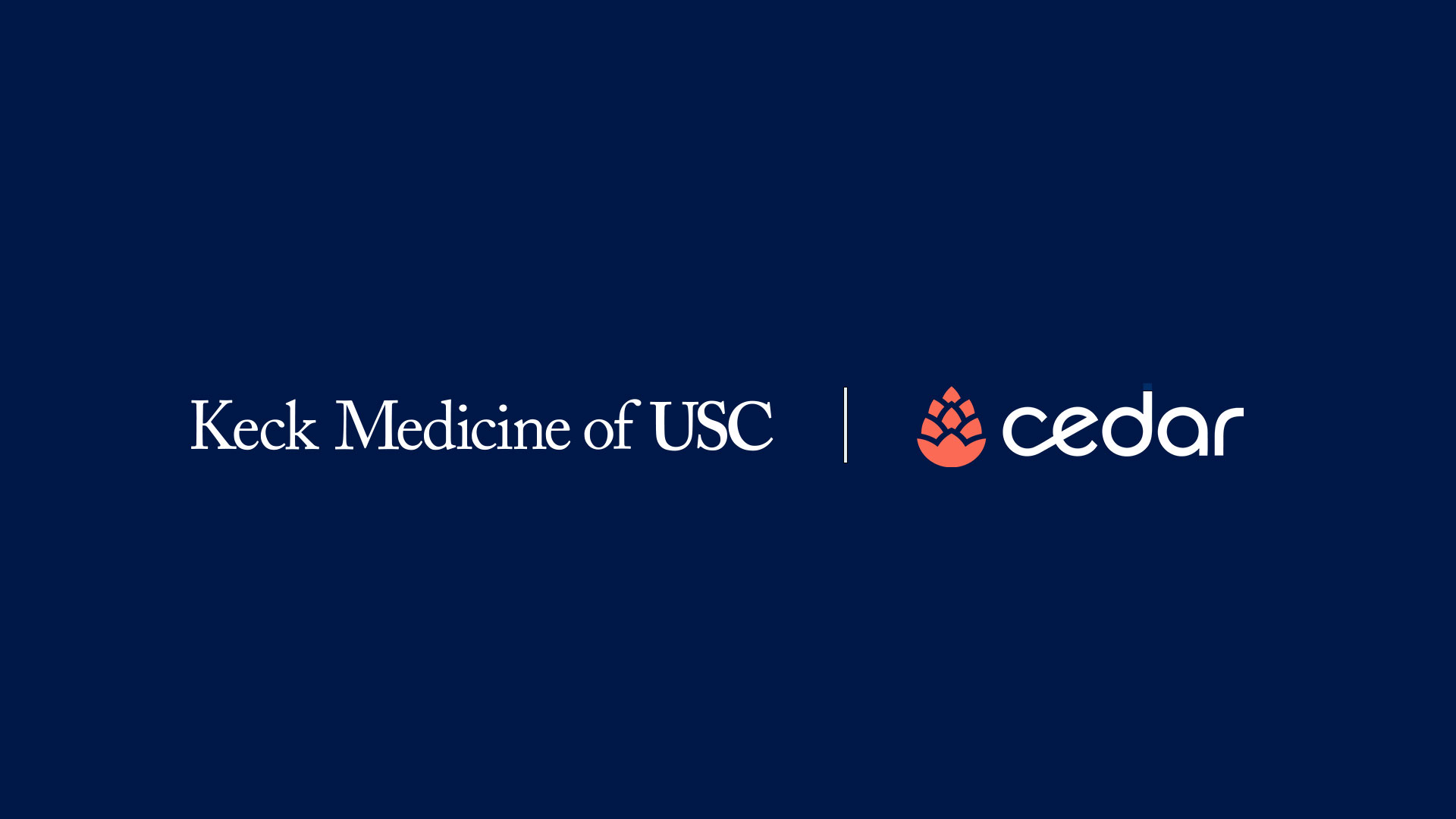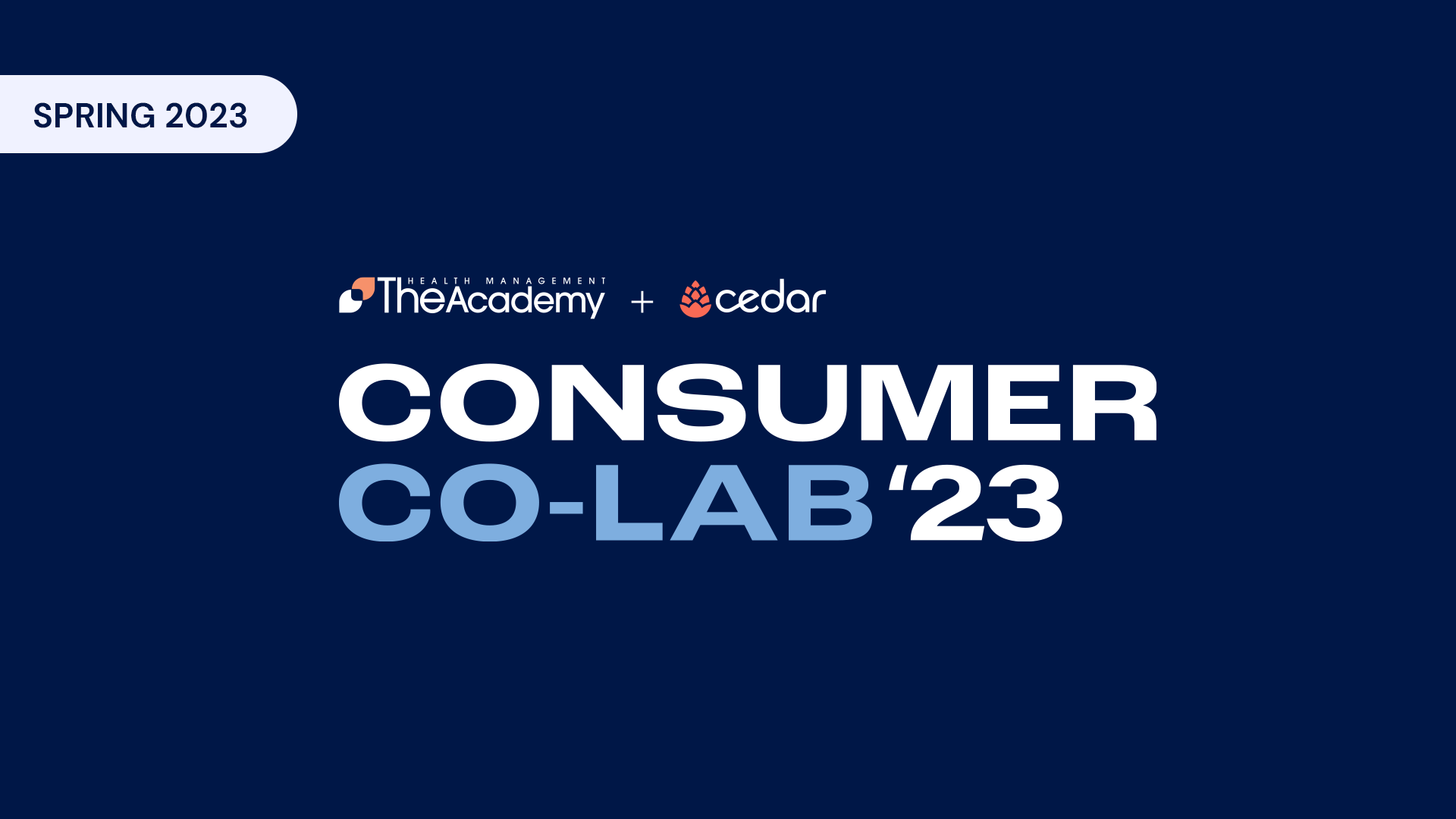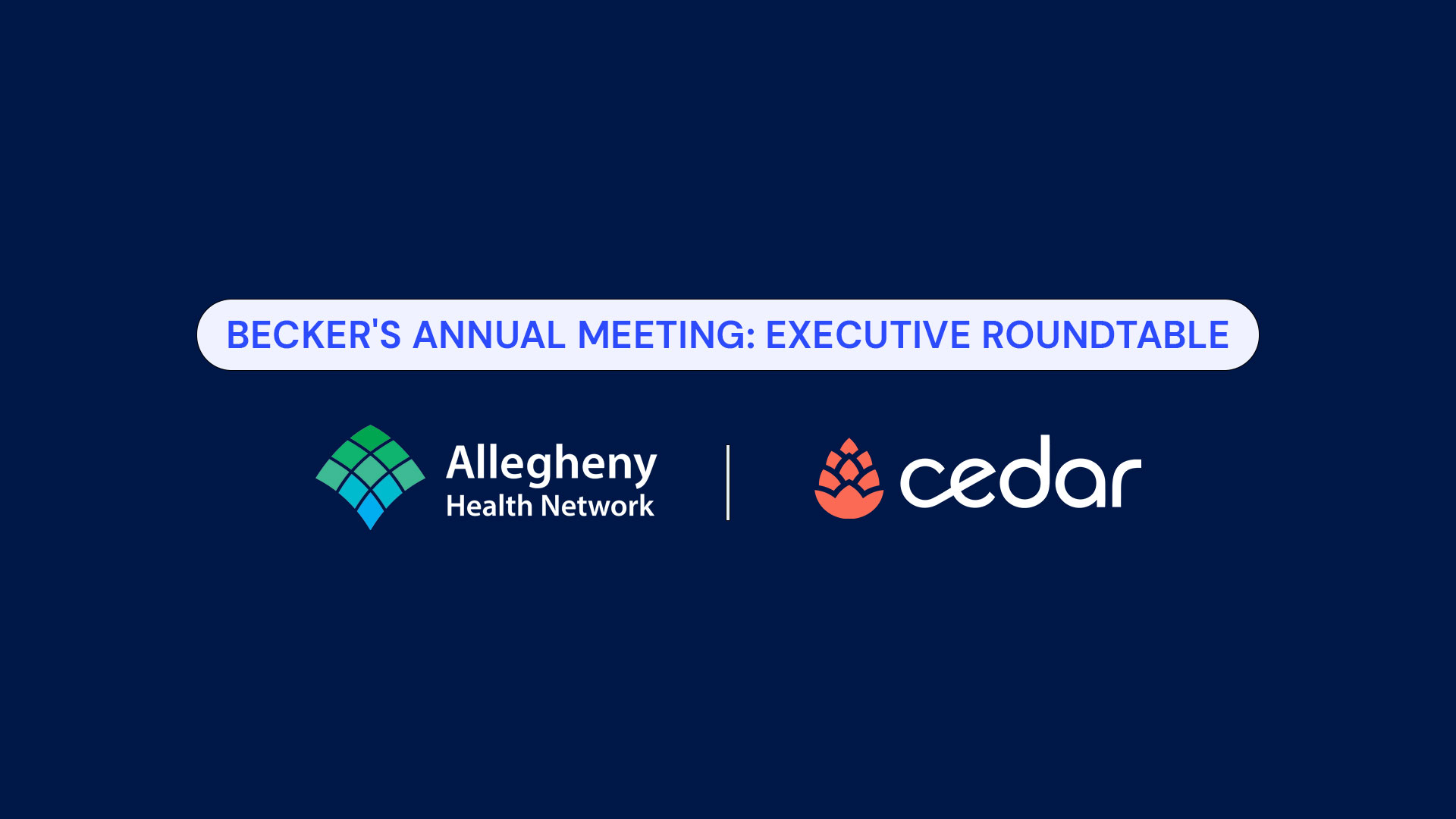This spring, U.S. health systems and physician groups grappled with the challenge of controlling the domestic effects of a surging pandemic while remaining financially solvent. While COVID-19 continues to spread in certain areas of the U.S., health systems are now able to focus on financial recovery in addition to preparing to meet future U.S. healthcare demands.
In a recent virtual discussion with Ninth U.S. Secretary of Veterans Affairs Dr. David Shulkin, Northwell Health Executive Vice President and Chief Business Strategy Officer Rich Miller, and Novant Health Senior Vice President of Finance Geoff Gardner shared their insights on how COVID-19 has impacted their health systems’ operations, the future of care and how healthcare finance executives can rise to the challenge.
Impact #1: COVID-19 has pushed health systems to pursue new revenue sources, decrease costs and deal with financial pressure—but not in all the ways you might think.
COVID-19 has likely caused a paradigm shift in the traditional models of the healthcare journey, with patients significantly changing care center preference. According to Geoff Gardner, there may be no going back.
“Folks are concerned with going in for low acuity emergency room visits inside a hospital setting – we’re only at about 80% emergency department treat and release volume,” he said. “Contrast that with our urgent care centers which are running at 130% of volume. People are deferring care or redirecting into centers outside hospital facilities. The trend is likely to become long-term as people rethink care venues and where they receive treatment.”
Rich Miller agreed and underscored the fact that COVID-19 has put telehealth on the map like never before. But rather than patients and providers moving care to telehealth at the expense of traditional channels, a hybrid model where all pieces become greater than the sum of their parts is more likely.
“Home-based services aren’t necessarily the most cost effective, but remote monitoring provides a big positive patient experience factor,” he said. “We’ve noticed that among previously non-compliant patients, compliance goes up and we generate more revenue when we’re able to perform check ups remotely. I also think you’re going to see growth in remote monitoring which will be good for patients and help gain efficiency. Home-based services offer a safe and convenient alternative to nursing facilities, allowing elderly patients to live at home and get the services they need.”
Gartner agreed, stating his perspective was to build out digital front-facing payment interaction in terms of initial communication, scheduling, reminders and check-ins. “Anything that eases transition from your car to the point of care probably gives people a lot of comfort.”
Dr. David Shulkin added that it’s almost certain that COVID-19 pushed momentum away from large footprint healthcare systems and a brick and mortar approach in general.
“Most systems are now recognizing they don’t need as much admin space and don’t need to construct as many new buildings. Care will shift to different settings, including the home as a big one. Another issue is that volume is unlikely to completely return. I think we’ve seen a change in patient behavior and in preference for how patients get care. Healthcare organizations are going to have to get serious about cost reduction and productivity because they can’t expect to have as much high-cost staff as before while returning to financial strength. You’ll see market consolidation and people that need to be part of different payment models, so it’s a great time to look for new partnerships while investigating how we use technology to reduce costs and boost productivity.”
“But video visits aren’t the key by themselves,” he added. “Technology needs to provide continuous rather than episodic care management. It must integrate into how we manage chronic and continuous managed care, how we layer in artificial intelligence and decision making systems, and it has to take into account patient preferences. That’s going to be key to future success and competitive differentiation in virtual care.”

Impact #2: COVID-19 has changed the way we think about healthcare financing, putting value-based care at the forefront.
According to Gardner, providers with models centered around outcomes, primarily shared savings or other types of value-based arrangements, are probably doing really well this year.
“This is partly due to reduction in services sought by consumers, but also because they were probably two to four years ahead in their model design. And, if you look around at health systems that have their own insurance plans, their expenditures were lower during the services shutdown, propping up the overall financial performance of the system. Again, this is a value-based play.”
Miller has seen a similar phenomenon, as Northwell Health has ownership in a local value-based plan with over 1.5 million members; this includes patients on Medicaid, Medicare Advantage and commercial products on which they take full or shared risk.
Miller and Gardner’s experience aligned with Dr. Shulkin’s overall assessment of the current state of healthcare financing, who said that, “I believe we’re going to have to begin to move away from employer-sponsored healthcare payments. It won’t happen all at once, and it will depend on the government in power, but [the need and trend] will be moving away from reliance on payroll taxes for Medicare, moving away from how we currently pay for Medicaid, and moving toward managed Medicare Advantage plans at the federal level and managed Medicaid at state levels while looking for new shared models of geographic or population risk taking. I think those are all things that are going to accelerate with a healthcare financing system under extreme pressure.”
While value-based care models have proved successful during COVID-19 – and may provide a model for future healthcare financing – Miller provided a cautionary thought for health systems to keep in mind: “However, the key words are ‘this year.’ No one knows yet for sure what the lingering effects will be for all the people infected with COVID-19, and what kind of utilization needs that’s going to drive in the future.”
Impact #3: COVID-19 has ushered in an era of massively accelerated change, leadership opportunity and the need for proactive contingency plans.
Despite the significant negative impacts of COVID-19, Dr. Shullkin, Gardner and Miller agreed that it also comes with opportunity, provided leadership teams combine preparation and foresight with a will to execute.
“Shore up your cash position if at all possible,” Gardner said. “Scenario plan for potential future outbreaks and estimate the PPE needed to address a worst-case scenario. If you don’t, you’ll get caught off guard and have to shut down services or team members will feel they’re not protected.”
Miller concurred, adding that labor pools of deployable staff and liquidity required to raise funds as needed were must-have resources entering the “new norm.”
“I think this is the best time for healthcare leadership teams we’ve seen in a long time,” Dr. Shulkin added on a closing optimistic note. “It’s given the executive teams freedom to make hard decisions that they’d previously have trouble making due to traditional political factors. Now is the time to implement bold plans. If you’re going to get out of a lease, change your footprint, renegotiate with vendors or refocus clinical priorities, you can easily explain why and how it will help keep your future organization strong.”
To be notified of upcoming Cedar virtual events, click here to join our mailing list.



